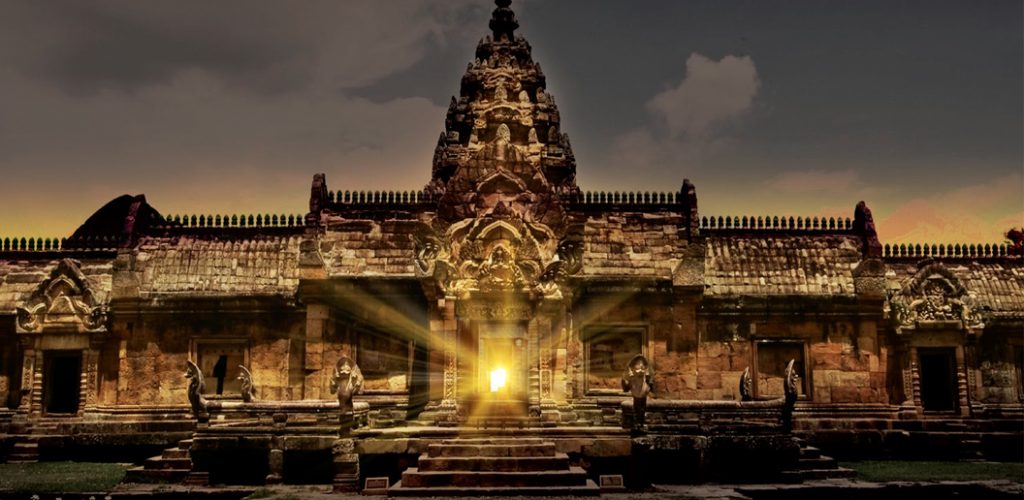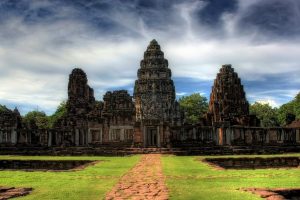 Nakhon Ratchasima, better known as Korat, is the wondrous door to Isan,the Lao-speaking north-east, at the western edge of the Korat Plateau. The name Nakhon Ratchasima is both used for the city and the province of which it is the capital, and the shorter name, Korat, comes from an older name the city used to be called many years ago. Historically, it used to mark the boundary between Lao and Siamese territory. Korat is one of the major cities of Isan and is oftentimes referred to as one of the “Big Four of Isan”.
Nakhon Ratchasima, better known as Korat, is the wondrous door to Isan,the Lao-speaking north-east, at the western edge of the Korat Plateau. The name Nakhon Ratchasima is both used for the city and the province of which it is the capital, and the shorter name, Korat, comes from an older name the city used to be called many years ago. Historically, it used to mark the boundary between Lao and Siamese territory. Korat is one of the major cities of Isan and is oftentimes referred to as one of the “Big Four of Isan”.
Prior to the 14th century, the area of Nakhon Ratchasima was under the Khmer empire, King Narai of Ayutthaya, ordered a new city to be built on the site to serve as a stronghold on Ayutthaya’s north-eastern frontier. Nakhon Ratchasima was thereafter mentioned in Siamese legal documents and chronicles as a “second-class” city of the Ayutthaya Kingdom.
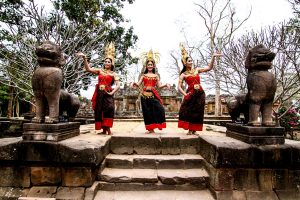 Today, with a population of just over 200,000, a host of shopping malls, a large sports stadium, a zoo, a multitude of interesting and diverse temples with fascinating historical backgrounds, museums and a lot more, there is a reason why Korat is one of the four most important role-playing cities of Isan. Being the gateway to beautiful Isan makes Korat a passers-by city but at the same time it has a lot to offer.
Today, with a population of just over 200,000, a host of shopping malls, a large sports stadium, a zoo, a multitude of interesting and diverse temples with fascinating historical backgrounds, museums and a lot more, there is a reason why Korat is one of the four most important role-playing cities of Isan. Being the gateway to beautiful Isan makes Korat a passers-by city but at the same time it has a lot to offer.
Khorat is a mere three to four hour drive from Bangkok in a north eastern direction and therefore makes it an easy to reach destination. There are buses departing from Bangkok at the Mo Chit bus station and at the Victory Monument bus station leaving roughly every half hour. The ride to Korat is refreshing and inspiring, leaving behind the hard concrete jungle of Bangkok and heading to the large farmlands, green fields and great open spaces that start to emerge on the horizon,
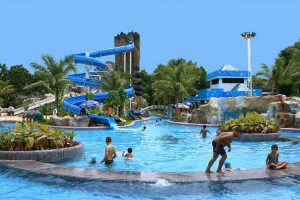 Halfway into the journey you’ll come across the Khao Yai National Park, one of the most popular National Parks in all of Thailand and the first encounter with the many cultural and entertainment spots the province has to offer. In Nakhon Ratchasima you’ll find the Kao Yai Floating Market and historical sites such as the Korat City Pillar, the Korat City Gates, the Korat Fossil Museum, the Petrified Wood Museum and the vast Nakhon Ratchasima Zoo (Also known as the Korat Zoo). At the Zoo you can spend an entire day, or even a couple of days and nights in comfortable chalets the zoo has to offer. Booking a Chalet is great in that it allows you to spend time alongside tigers, camels, marine life, lizards and the many other animal species from all over the world. Within the Korat Zoo, there is a one of a kind Lagoon and Water Park allowing you to cool down from the heat, this venue is well suited for children of all ages.
Halfway into the journey you’ll come across the Khao Yai National Park, one of the most popular National Parks in all of Thailand and the first encounter with the many cultural and entertainment spots the province has to offer. In Nakhon Ratchasima you’ll find the Kao Yai Floating Market and historical sites such as the Korat City Pillar, the Korat City Gates, the Korat Fossil Museum, the Petrified Wood Museum and the vast Nakhon Ratchasima Zoo (Also known as the Korat Zoo). At the Zoo you can spend an entire day, or even a couple of days and nights in comfortable chalets the zoo has to offer. Booking a Chalet is great in that it allows you to spend time alongside tigers, camels, marine life, lizards and the many other animal species from all over the world. Within the Korat Zoo, there is a one of a kind Lagoon and Water Park allowing you to cool down from the heat, this venue is well suited for children of all ages.
Other culturally enriching places to visit include the Phimai Historical Park where you can take a time machine to the past and witness ruins from as early as the 11th century. Phimai is the largest Khmer ruins complex in Thailand and comprises an inner moated city, 565 by 1030 metres, which was built in the 11th to 12th century with further additions in the 13th.
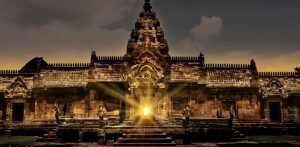 An extraordinary feature of the architectural design of the sanctuary at Phimai, taking advantage of its geographical location, is the straight through way from the entrance door on the East leading to the farthest door, the 15th door, on the western end of the structural complex. The design was made to display the spectacular sunrise of the two annual crossings of the equator by the Sun, beaming the majestic aura of the rising sun from the entrance door on the East straight through the fifteen doors to the western end of the doorway of the sanctuary. Around each time of the equinoxes, visitors to this day crowd the outside square on the west end of the Prasal Phanom Rung to witness the awesome spell of the emerging sun over the horizon through the fifteen doors at the western end of the sanctuary.” The Angkor style architecture of these historical gems inspired numerous important structures, cities and buildings in Thailand during later years. Just north of Phimai Historical Park, and not to be missed, is the Phimai National Museum which houses Khmer artefacts and works of art from excavations, not only from Phimai, but other Khmer ruins in southern I’san. This complex is the most outstanding example of Khmer Architecture in Thailand.
An extraordinary feature of the architectural design of the sanctuary at Phimai, taking advantage of its geographical location, is the straight through way from the entrance door on the East leading to the farthest door, the 15th door, on the western end of the structural complex. The design was made to display the spectacular sunrise of the two annual crossings of the equator by the Sun, beaming the majestic aura of the rising sun from the entrance door on the East straight through the fifteen doors to the western end of the doorway of the sanctuary. Around each time of the equinoxes, visitors to this day crowd the outside square on the west end of the Prasal Phanom Rung to witness the awesome spell of the emerging sun over the horizon through the fifteen doors at the western end of the sanctuary.” The Angkor style architecture of these historical gems inspired numerous important structures, cities and buildings in Thailand during later years. Just north of Phimai Historical Park, and not to be missed, is the Phimai National Museum which houses Khmer artefacts and works of art from excavations, not only from Phimai, but other Khmer ruins in southern I’san. This complex is the most outstanding example of Khmer Architecture in Thailand.
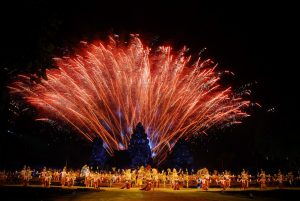 Another important site to visit in the area is the Thao Suranaree Monument and the Wat Sala Loi, the former represents a true testament of willpower and determination as well as the influence of one sole individual. During an invasion of Korat in the early 1800s, the wife of an inefficient general took it upon herself to take control and lead the residents of Korat to defend their city. They were victorious, and Khunying Mo was awarded the honourable title of Thao Suranaree by the King of that era. The monument is worth visiting due to the historical importance of it and can be found in Korat City near the Chumphon Gate. Wat Sala Loi is a temple constructed by Thao Suranaree and her husband the general in the 1820s. The site hosts a plaster statue of the powerful heroine alone with clay statues depicting the life of Buddha. This temple is Khun Thao Suranaree’s final resting place and where her ashes have remained. Other important temples are the Wat Phayap Temple, found in the city centre of Korat, but with a slight surprise the moment you enter. The interior of this temple has been made to look like a cave. If you find yourself wandering around in the city, pop in here for a quick look around. The temple won’t be found amongst the lists of top tourist attractions in the area, but the locals regard it as a very spiritual and peaceful building. Another temple constructed during early centuries is, Prasat Phanom Wan. Initially it was dedicated to the Hindu God Shiva and meant as a Hindu site, but over the decades it has became a place of Buddhist prayer.
Another important site to visit in the area is the Thao Suranaree Monument and the Wat Sala Loi, the former represents a true testament of willpower and determination as well as the influence of one sole individual. During an invasion of Korat in the early 1800s, the wife of an inefficient general took it upon herself to take control and lead the residents of Korat to defend their city. They were victorious, and Khunying Mo was awarded the honourable title of Thao Suranaree by the King of that era. The monument is worth visiting due to the historical importance of it and can be found in Korat City near the Chumphon Gate. Wat Sala Loi is a temple constructed by Thao Suranaree and her husband the general in the 1820s. The site hosts a plaster statue of the powerful heroine alone with clay statues depicting the life of Buddha. This temple is Khun Thao Suranaree’s final resting place and where her ashes have remained. Other important temples are the Wat Phayap Temple, found in the city centre of Korat, but with a slight surprise the moment you enter. The interior of this temple has been made to look like a cave. If you find yourself wandering around in the city, pop in here for a quick look around. The temple won’t be found amongst the lists of top tourist attractions in the area, but the locals regard it as a very spiritual and peaceful building. Another temple constructed during early centuries is, Prasat Phanom Wan. Initially it was dedicated to the Hindu God Shiva and meant as a Hindu site, but over the decades it has became a place of Buddhist prayer.
The Maha Viravong National Museum, is another must see, it was created around the art collection of an important Monk from the area and contains cultural pieces from historic sites. You will find Buddha images from different timeframes and also pottery pieces from far gone eras. The museum is quite small, but pumped full of rich Thai history and interesting visuals.
 Finally the Wat Dhammachakra Sema Ram also known as Wat Phra Non which means ‘Sleeping Buddha’ concludes the must-visit cultural and historical sites. Many travellers have seen the impressive reclining Buddha in Bangkok, but this similar sandstone sculpture is the very first one of its kind therefore making it the oldest one in Thailand. The piece dates back to the BC era and unbelievably it hasn’t been treated in order to be preserved.
Finally the Wat Dhammachakra Sema Ram also known as Wat Phra Non which means ‘Sleeping Buddha’ concludes the must-visit cultural and historical sites. Many travellers have seen the impressive reclining Buddha in Bangkok, but this similar sandstone sculpture is the very first one of its kind therefore making it the oldest one in Thailand. The piece dates back to the BC era and unbelievably it hasn’t been treated in order to be preserved.
For those interested in the functioning of ancient cities, the Lamtakhong Dam is a must see. Its construction started in the 1970s, in order to irrigate the surrounding farmlands. After some years it also became the water storage facility of The Lamtakhong Power Plant, which was a very first for Thailand. The dam is a relaxing spot to break away from the hustle and bustle of everyday city life.
For nature lovers and enthusiasts, the Flora Park is ideal. This park is for those who want to drown themselves in a massive selection of plants and flowers while enjoying the aroma and the unique aesthetics nature has to offer; fill of freshness and vibrant color schemes. One can relax with a drink at the coffee shop or buy some souvenirs for family and friends back at home from the gift shop. If you happen to be there around March, you must not miss the Flower Festival.
Although it may not seem like the best touristic attraction while visiting a foreign country, the Ratchasima Mall (Korat Mall) is considered one of the top shopping malls outside Bangkok. It offers a range of variety for every taste and has a food court that brings cuisine from all over the world.
The Korat Horse Racing Club is another attraction that may interest you. It might be seen as unethical to some, but the majestic horses are beautiful and if you like betting while enjoying good food and drinks with luck by your side, this may be the kind of attraction for you.
Arts of Korat, a museum featuring 3D paintings is also a must see. It is a fantastic art museum that brings you closer to art and is nothing like what for many may possibly be a boring passive art museum.
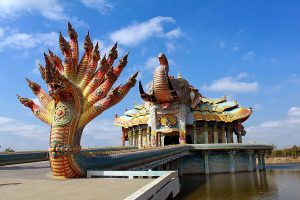 For those who tend to feel homesick and long for some familiar activities, there are five quality golf courses in the area, and can later enjoy, generous portions of Western food such as juicy burgers or a tender steak, at O&D Pub Restaurant in Korat. Sit back, relax and enjoy some easy tunes while watching international sport on the big screen televisions. The pub offers a variety of local and international beers and a delicious Thai food selection too.
For those who tend to feel homesick and long for some familiar activities, there are five quality golf courses in the area, and can later enjoy, generous portions of Western food such as juicy burgers or a tender steak, at O&D Pub Restaurant in Korat. Sit back, relax and enjoy some easy tunes while watching international sport on the big screen televisions. The pub offers a variety of local and international beers and a delicious Thai food selection too.
Accommodation in Korat is a no brainer. It is very easy to find in the city, ranging from very cheap apartment rentals to surprisingly low-priced 5 star hotels. The people are quite unique too, speaking a dialect known as Thai-Korat, which is far different from the Isan-Thai spoken in other more North Easterly provinces.
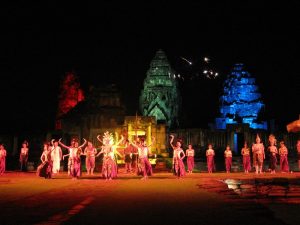 In conclusion, Korat is a must see. It is a culturally and historically enriching province that is worth going to in order to truly comprehend Thai tradition, Thai culture and Thai history which in turn helps gain a deeper knowledge and understanding of the land of smiles today.
In conclusion, Korat is a must see. It is a culturally and historically enriching province that is worth going to in order to truly comprehend Thai tradition, Thai culture and Thai history which in turn helps gain a deeper knowledge and understanding of the land of smiles today.


